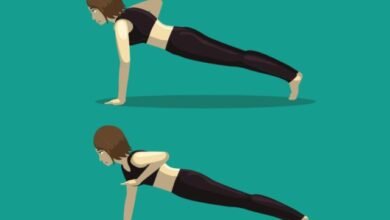A Chilling Trend Or Ancient Science?: HealthifyMe

Ice baths, a practice as chilling as it sounds, have surged in popularity across a spectrum of society, from elite athletes to wellness advocates. This cold therapy, rooted in the ancient wisdom of Greek and Roman physicians, has transcended time to become a modern-day phenomenon. Its appeal lies in its simplicity and also in the growing body of anecdotal and scientific evidence supporting its role in recovery and health optimisation.
As we explore ice baths, we uncover a practice that is more than just a trend. It is a mix of tradition, science, and wellness that has captured the interest of millions worldwide. From social media influencers to professional sports figures, the adoption of ice baths has become a testament to its widespread acceptance and curiosity among the public. This article aims to explain the intrigue surrounding ice baths, exploring their historical roots, the science behind their benefits, the potential risks involved, and practical tips for those interested in incorporating this cold plunge into their wellness routine.
Understanding Ice Baths
An ice bath involves immersing the body or parts of it in ice-cold water, typically ranging between 50 to 59°F (10 to 15°C), for a duration of approximately 10 to 15 minutes. This practice aims to harness the effects of acute cold exposure on the body. These effects include reducing inflammation, alleviating muscle soreness, and enhancing blood circulation.
The History
Tracing back to ancient civilisations, the concept of cold water immersion has a storied history. The ancient Greeks and Romans, renowned for their baths, recognised and utilised the therapeutic benefits of cold water. Claudius Galen, a Roman physician, advocated for cold baths as a fever treatment, highlighting the medical significance of this practice early on. Throughout history, various cultures have incorporated cold water immersion into their traditions for its health-promoting and therapeutic properties.
In modern times, the tradition has evolved into the concept of ice baths. This practice has gained considerable popularity among athletes, fitness trainers, and physical therapists as a recovery tool after intense workouts, injury rehabilitation, and for overall health enhancement. While ice baths represent a traditional approach to cold therapy, advancements in technology have introduced whole-body cryotherapy. This modern alternative involves exposing the body to extremely low temperatures (as low as -200°F or -129°C) in a controlled environment.
Ice Bath vs Cryotherapy
Comparative studies between ice baths and whole-body cryotherapy have yielded mixed results. Some studies suggest ice baths may be more effective in certain aspects of muscle recovery. However, the need for more comprehensive research is evident to establish definitive conclusions.
The Cultural Significance
The cultural significance of ice baths extends beyond their physical benefits. They embody a practice of resilience and mental fortitude. Across the globe, cold water immersion continues to be celebrated, from the Scandinavian tradition of ice swimming to the Japanese practice of Misogi. These traditions highlight the physical and mental health benefits and also the cultural appreciation of embracing the cold for well-being.
Summary
Ice baths involve submerging the body in ice-cold water to stimulate various health benefits, including reduced inflammation, less muscle soreness, and improved blood circulation. This practice has roots in ancient civilisations like Greece and Rome, where cold water immersion was used for its therapeutic effects. Today, it has evolved into a popular recovery method among athletes and wellness enthusiasts, with some comparing it to modern whole-body cryotherapy. Despite mixed research findings on effectiveness, ice baths remain a symbol of resilience and mental strength, celebrated in various cultures worldwide for their physical and mental health advantages.
The Benefits of Ice Baths
Ice baths have garnered attention for their various benefits spanning physical, mental, and psychological domains. This cold therapy technique, though momentarily discomforting, initiates multiple physiological responses that contribute to its advantages. Here is a comprehensive overview of how ice baths can impact well-being.
1. Reduced Muscle Soreness and Improved Recovery
The body’s immediate response to cold water immersion is vasoconstriction. Upon entering an ice bath, the body experiences an immediate vascular reaction, where blood vessels constrict (vasoconstriction) in response to the cold. This natural reaction reduces blood flow to the extremities. It minimises swelling and inflammation and is a protective measure against hypothermia. This mechanism helps alleviate muscle pain and accelerates recovery post-exercise.
Studies indicate that athletes who engage in ice baths report less muscle soreness. That supports the popularity of ice baths in sports recovery protocols. However, it is crucial to note that research findings are mixed, with some suggesting the benefits may partially stem from a placebo effect.
2. Enhanced Circulation and Immune System Boost
Regular exposure to cold water can lead to adaptations in the cardiovascular system. These adaptations include improved circulation and increased tolerance to stress. These changes contribute to enhanced endurance and performance. Furthermore, they can lower heart rate and blood pressure over time.
This “pumping” action can strengthen the immune system by promoting the circulation of immune cells. Although direct evidence of ice baths boosting immunity is limited, the potential for cold exposure to contribute to a more robust immune response is a promising area of research.
3. Increased Mental Toughness and Resilience
Subjecting oneself to the controlled stress of an ice bath can enhance mental toughness. This practice trains the mind to endure and adapt to discomfort. It helps improve resilience in challenges. The psychological benefits of overcoming the initial shock and discomfort of cold exposure lead to a boost in confidence and mental strength.
4. Stress Reduction and Mood Enhancement
The shock of cold water immersion triggers the release of endorphins. Endorphins are the body’s natural painkillers and mood elevators. Additionally, cold exposure activates the parasympathetic nervous system. They promote relaxation and stress reduction.
Studies show that regular ice baths can lead to improved mood and potentially reduce symptoms of anxiety and depression. However, more research is needed to understand the relationship between cold therapy and mental health fully.
5. Training Vagus Nerve
Regular ice bath practices may stimulate the vagus nerve. This nerve plays a crucial role in regulating the body’s stress response. Enhanced vagal tone leads to better stress resilience, lower heart rate, and improved overall well-being.
6. Improved Skin and Hair Quality
The cold water causes constriction of the skin’s pores and the scalp’s hair follicles, potentially leading to healthier-looking skin and hair by reducing oiliness and improving hair grip. While direct studies on ice baths’ effects on skin and hair are sparse, dermatological advice often includes cold water rinses for these benefits.
Summary
Ice baths offer a range of benefits, from mitigating muscle soreness and enhancing recovery to developing mental resilience and potentially boosting the immune system. While the science is evolving, the combination of historical use and contemporary research paints a promising picture of this cold therapy’s place in health and wellness routines. As with any wellness practice, individuals should consider their health status and consult with healthcare professionals before incorporating ice baths into their regimen.
Potential Side Effects and Risk Factors of Ice Baths
Ice baths can be beneficial for many. However, they also carry potential risks and side effects that are important to consider. These concerns stem from the body’s response to cold exposure and the physiological demands placed upon it during such stress. Understanding these risks is crucial for anyone considering ice baths, especially for recovery or health benefits.
Medical Concern: Hypothermia
Hypothermia occurs when the body loses heat faster than it can produce it, causing a drop in core body temperature. Ice baths, by their nature, expose the body to extreme cold, which can lead to a rapid decrease in body temperature.
Symptoms start with shivering, followed by confusion and drowsiness. They can escalate to severe respiratory and cardiac complications. Those with existing health conditions, the elderly, or individuals on certain medications may have an increased risk of hypothermia.
Cardiovascular Stress
The cold shock response increases heart rate and blood pressure. It places additional stress on the cardiovascular system. This reaction can be particularly hazardous for individuals with pre-existing heart conditions.
There is an elevated risk of triggering adverse cardiovascular events, such as heart attacks or strokes, especially in individuals already susceptible to these conditions.
Skepticism from the Scientific Community
While people laud ice baths for their benefits, scepticism exists within the scientific community regarding their efficacy and safety. Concerns are primarily centred around:
- Efficacy: Some studies challenge the effectiveness of ice baths in muscle recovery and suggest they may inhibit muscle protein synthesis. It can potentially hinder muscle growth and strength gains.
- Safety: The broad application of ice baths without considering individual health profiles can lead to adverse outcomes. It is particularly true for those with conditions like heart disease, hypertension, or poor circulation.
- Study Limitations: Many studies suffer from small sample sizes and variability in methodology. That makes it challenging to draw broad conclusions. Additionally, the subjective nature of perceived recovery and soreness can affect study outcomes.
Special Considerations
- Pre-existing Medical Conditions: Individuals with heart disease, high blood pressure, diabetes, peripheral neuropathy, poor circulation, venous stasis, and cold agglutinin disease should exercise caution. The constriction of blood vessels due to cold exposure can exacerbate these conditions.
- Guidance: Children, particularly young ones and older people, should approach ice baths with caution. Their bodies may not regulate temperature as effectively, increasing the risk of hypothermia.
- Underlying Injuries: Using ice baths to numb the pain of an underlying injury can be counterproductive and dangerous. It may mask symptoms, leading to worsened conditions or delayed healing.
Summary
Ice baths offer numerous benefits. However, they have their risks. Hypothermia and cardiovascular stress are significant concerns, with the cold shock response posing a potential danger to those with pre-existing conditions. Scepticism from the scientific community further highlights the need for caution, particularly regarding the efficacy and blanket application of ice baths for recovery and health enhancement. Individuals with specific medical conditions, as well as vulnerable populations, should approach ice baths with caution and always consult with a healthcare provider before incorporating them into their routine.
Ice Bath: Guidelines for Safe Practice
Practising ice baths safely involves understanding the preparation, procedure, and precautions necessary to maximise benefits while minimising risks. Below are the essential guidelines for anyone considering ice baths. You should focus on preparation, safety tips, and alternative or complementary practices. By adhering to these guidelines, individuals can engage in ice baths with confidence and care.
Temperature Recommendations
Aim for a water temperature range between 50°F (10°C) and 59°F (15°C). This range is considered optimal for inducing the cold shock response without imposing undue stress on the body. Use a reliable water thermometer to ensure accuracy.
Duration and Frequency
Limit ice bath sessions to 10-15 minutes. Initial sessions should be shorter, gradually increasing it to the entire duration based on comfort and tolerance. The frequency should be tailored to individual recovery needs, generally not exceeding once or twice a week for intense recovery sessions.
Listening to Your Body
Recognise your body’s signals. Discomfort is normal, but pain or extreme distress is a sign to end the session immediately. Exceeding recommended durations can lead to hypothermia or other adverse effects. Always set a timer to keep track of your immersion time.
When to Avoid Ice Baths
Individuals with certain health conditions, such as cardiovascular diseases, high blood pressure, or circulatory disorders, should consult with a healthcare provider before attempting ice baths.
Pregnant women and young children should also avoid ice baths due to the increased risk of negative responses to extreme cold.
Alternatives and Complements
Consider alternative recovery methods like dynamic stretching, foam rolling, or mild exercise to promote blood flow and aid in recovery. Warm baths or contrast water therapy (alternating between cold and warm water) can offer less intense but beneficial recovery options.
Complementary Practices
Pair ice baths with proper hydration, nutrition, and rest for the best recovery outcomes. Mind-body practices like meditation or yoga can complement the physical recovery process, addressing both mental and physical well-being.
Summary
To safely engage in ice baths, adhere to recommended temperature ranges and limit immersion times to prevent adverse effects. It’s crucial to listen to your body’s signals and avoid ice baths under certain health conditions or without prior medical consultation. Alternatives and complementary practices can enhance recovery and provide additional benefits. By following these guidelines, individuals can safely incorporate ice baths into their recovery regimen, ensuring both effectiveness and safety.
HealthifyMe Suggestions
There are many reasons to frequently take ice baths. Partial-body ice baths are a great way to gradually increase your tolerance. Begin with only your legs in the ice bath, and move on to your waist, shoulders, and entire body. To avoid hypothermia, take an ice bath while wearing long sleeves and shorts. It will help you maintain a healthy body temperature while immersed in cold water. Every person is unique. Find what works best for you and your body, and remember to celebrate your progress along the way.
The Final Word
Ice baths emerge as a bridge between ancient practices and contemporary wellness. They echo the timeless pursuit of health and resilience. Their benefits, rooted in both tradition and science, offer a compelling narrative for those seeking to enhance recovery, boost mental toughness, and foster overall well-being.
While the benefits of icy waters may not be for everyone, the practice underscores a fundamental principle: sometimes, stepping out of our comfort zone (tempered by caution and informed by research) can lead us to discover untapped sources of strength and vitality. As we work towards our health, ice baths can be a testament to the enduring human spirit, challenging us to embrace the cold for personal growth and physical rejuvenation.
Disclaimer: The purpose of this article is just to disperse knowledge and raise awareness. It does not intend to replace medical advice from professionals. For further information, please contact our certified nutritionists Here.
Research Sources
2. Effects of cold water immersion after exercise on fatigue recovery and exercise performance
4. Could human cold adaptation decrease the risk of cardiovascular disease?
5. Health effects of voluntary exposure to cold water – a continuing subject of debate
7. Improved mood following a single immersion in cold water
Frequently Asked Questions (FAQs)
Q: What are ice baths?
A: Ice baths involve immersing the body in cold water, typically between 50°F (10°C) and 59°F (15°C), for around 10 to 15 minutes. This practice helps harness the therapeutic benefits of cold exposure to aid in recovery, reduce inflammation, and boost overall well-being.
Q: What are the benefits of taking ice baths?
A: The benefits of ice baths include reduced muscle soreness, improved recovery after physical activities, enhanced circulation, a stronger immune system, increased mental toughness, stress reduction, mood enhancement, and potentially improved skin and hair quality. These effects stem from the body’s physiological responses to cold exposure.
Q: How do ice baths help with muscle recovery?
A: Ice baths help with muscle recovery by inducing vasoconstriction, which reduces blood flow to the extremities, minimises swelling and inflammation, and alleviates muscle pain. This process accelerates the body’s recovery after intense physical exertion.
Q: Can ice baths reduce inflammation and soreness?
A: Yes, ice baths can reduce inflammation and soreness by limiting blood flow to areas of inflammation, decreasing metabolic activity, and reducing the swelling and tissue breakdown that contribute to muscle soreness after intense workouts.
Q: Are there any mental health benefits associated with ice baths?
A: Ice baths are associated with mental health benefits, including the release of endorphins, which are natural mood elevators and painkillers. The practice also activates the parasympathetic nervous system, leading to reduced stress levels and potentially lower symptoms of anxiety and depression.
Q: How long should someone stay in an ice bath?
A: The recommended duration for an ice bath is between 10 to 15 minutes. Beginners should start with shorter durations and gradually increase to the full duration as they become more accustomed to the sensation.
Q: Are ice baths safe for everyone?
A: Ice baths are not safe for everyone. Individuals with cardiovascular diseases, high blood pressure, circulatory disorders, pregnant women, and young children should exercise caution or avoid ice baths altogether. Consultation with a healthcare provider is advised before starting ice bath therapy.
Q: How frequently should someone take ice baths to experience benefits?
A: The frequency of ice baths should be tailored to individual recovery needs, generally not exceeding once or twice a week for intense recovery sessions. Listening to your body and consulting with a healthcare professional can help determine the best frequency for you.
Q: Can ice baths improve athletic performance?
A: Ice baths can indirectly improve athletic performance by aiding in faster recovery, reducing muscle soreness, and increasing the rate at which the body can return to peak training levels. However, the direct impact on performance varies and requires further research.
Q: Are there any potential risks or side effects of ice baths?
A: Potential risks or side effects of ice baths include hypothermia, cardiovascular stress, and adverse reactions in individuals with certain pre-existing health conditions. It’s crucial to follow recommended guidelines and consult with a healthcare professional to mitigate these risks.




